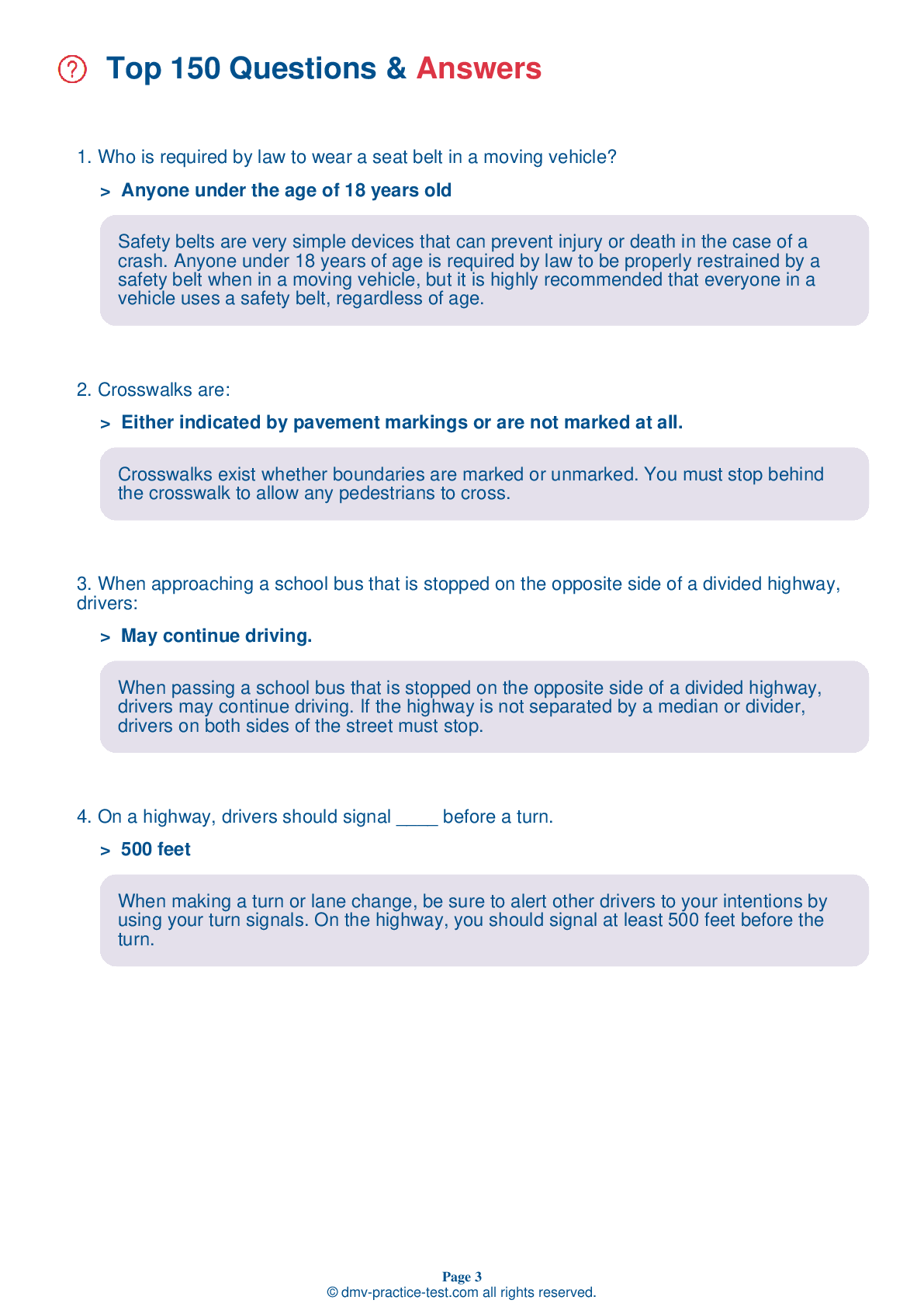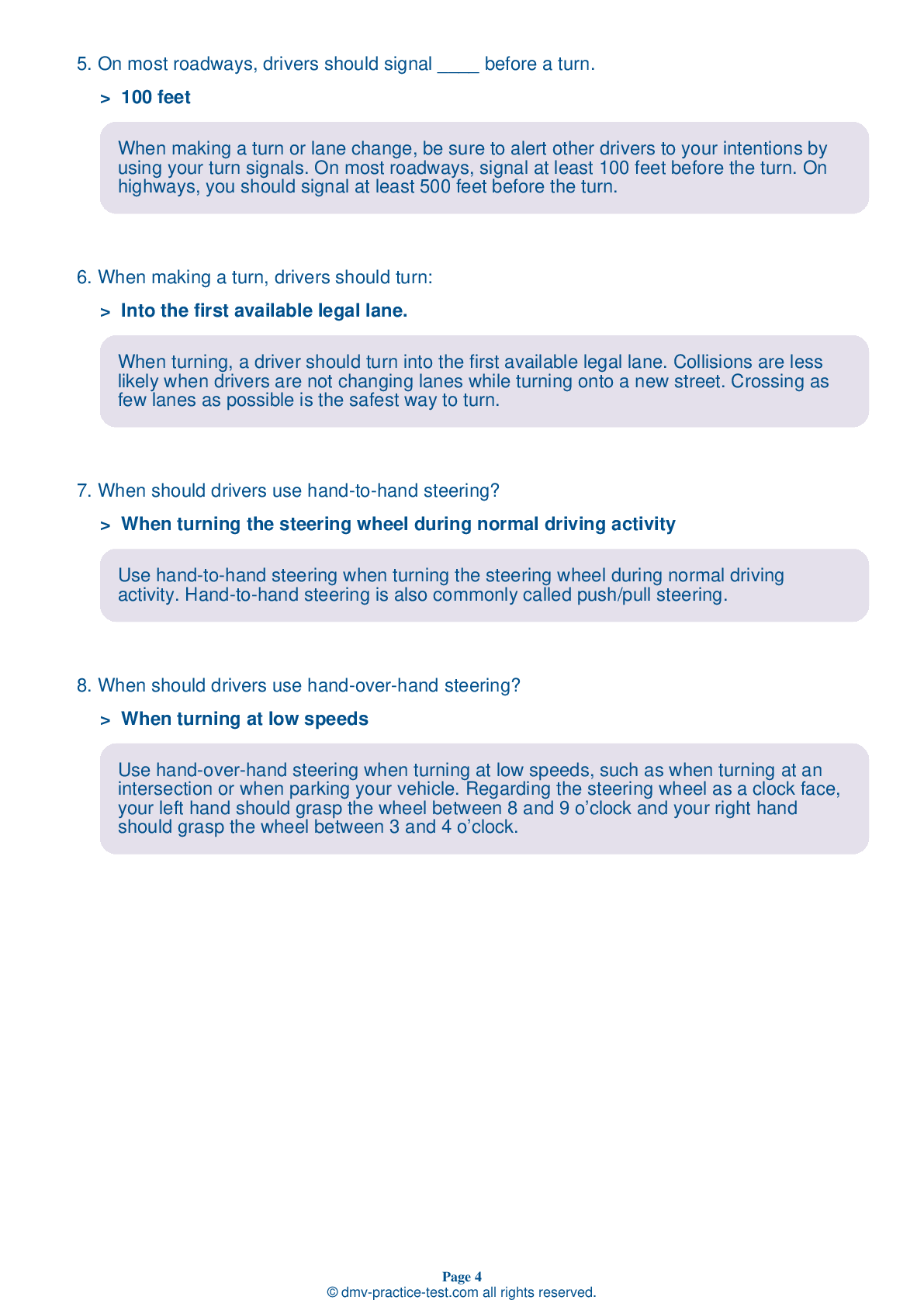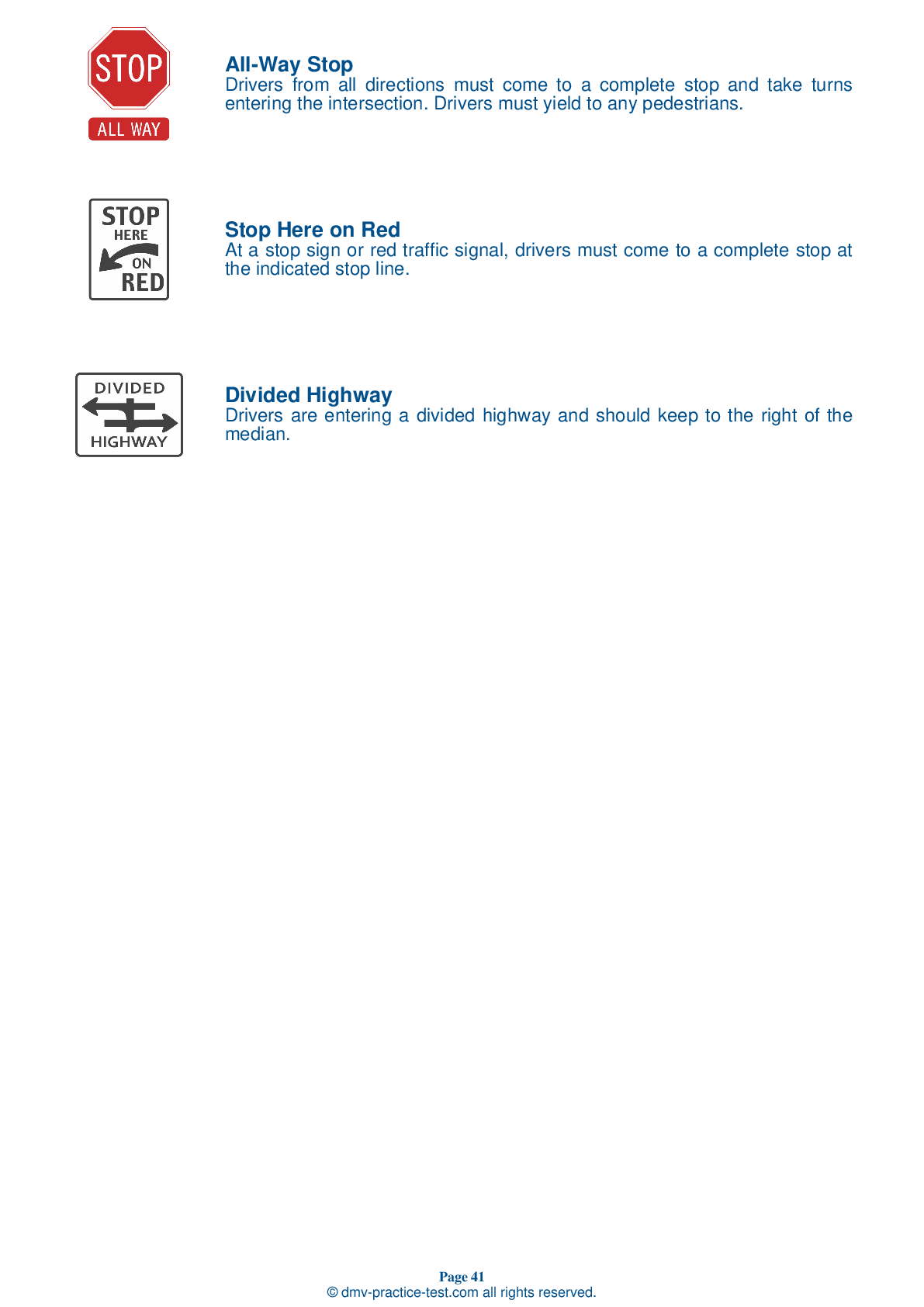FREE New Hampshire DMV Practice Test #8 Page 3 of 5
The DMV practise exams in New Hampshire have been updated for January 2025. It includes questions based on the most important traffic signals and legislation in the New Hampshire Driver Handbook for 2025. To study for the DMV driving permit test and driver's licence exam, use actual questions that are very similar (often identical!) to the DMV driving permit test and driver's licence exam.
Each question on the practise exam has a tip and explanation to help you recall the ideas. Questions about traffic rules, traffic signs, and driving statutes, as well as knowledge from the Driver Handbook, will be included in the written portion of the official New Hampshire DMV test.
You must properly answer 32 of the 40 questions to receive a passing mark. Take this New Hampshire DMV practise exam to help you prepare for your instruction permit or driver's licence.
The DMV exam is offered in a variety of languages.
Using any form of testing help will result in an automatic fail, and the DMV may take further action against your driver's licence, so avoid it.
17 . You are waiting to turn left at a multilane intersection and opposing traffic is blocking your view. You should:
You should never start a left turn until you can see that all the lanes you need to cross are clear and that you can safely make the turn.
18 . Which of the following best ensures your safety and the safety of those around you when you are backing your vehicle?
Backing requires extra caution because it is difficult for drivers to see behind their vehicles. Before entering a vehicle to back up, walk to the back of the vehicle to check for children and small objects.
19 . This sign is a warning that you are approaching:
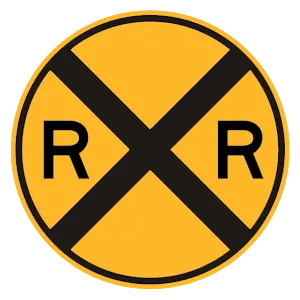
This sign indicates that you are approaching a railroad crossing.
20 . Your ability to stop is affected by:
Your ability to stop is greatly affected by the condition of the road. You need to reduce your speed when road conditions are poor in order to maintain control of your vehicle. You will be at risk if you are driving too quickly on roads that are slippery and you need to stop.
21 . The driver's left arm and hand are extended downward. This hand signal means that the driver plans to:
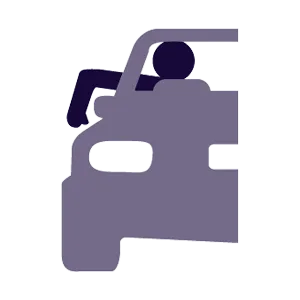
If a driver's left arm and hand are extended downward, they are indicating that they intend to stop. Adjust your driving accordingly if following a driver who is using this hand signal.
22 . Drowsy drivers:
Drowsiness can make people drive so poorly that they appear to be drunk. Opening a window, turning on the radio, or drinking coffee is not enough to make a drowsy driver alert to roadway hazards.
23 . This sign means:


